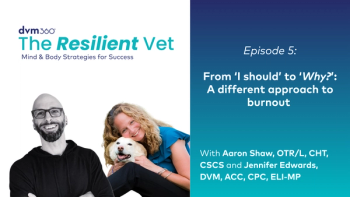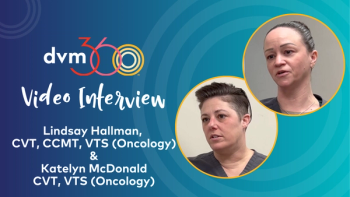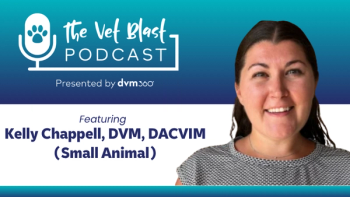
State consolidation erodes 'independence' of licensing board
Colombus, Ohio —The autonomy of veterinary licensing boards is under attack, vulnerable to a nationwide shift toward consolidation and closer government directive.
COLUMBUS, OHIO —The autonomy of veterinary licensing boards is under attack, vulnerable to a nationwide shift toward consolidation and closer government directive.
No going back
More than half of all U.S. veterinary licensing agencies are buried deep within state-directed umbrella organizations. But a handful of regulators who remain independent are being targeted for consolidation for often-ambiguous reasons, critics say. While the moves frequently are aimed at upping efficiency and streamlining costs, veterinary boards contend they run lean and on licensing fees. The shift threatens precisely what proponents claim consolidation enhances: public service, investigations and professional assistance.
At presstime, Ohio Gov. Bob Taft won a budget battle designed to push the state's veterinary licensing board and 19 other agencies into the department of health. Nearly 2,500 miles away, Oregon officials have once again ratcheted up consolidation talks. And while California's DVM certifiers narrowly escaped sunset by Arnold Schwarzenegger earlier this year, the governor now is picking off individual licensing agencies in an effort to gradually attain an agenda once blocked by public opposition, critics say.
"The veterinary profession feels this, there is no question," says Jack Advent, executive director of the Ohio Veterinary Medical Association. "But the biggest impact is on the public when service suffers and there's a delay in the way complaints are processed. My advice is if you can't get through to the veterinary board, call the governor's office."
Nationwide surge
The movement toward consolidation is closely monitored by Julie Works, attorney with the Federation of Associations of Regulatory Boards, which serves professional licensing agencies.
While state governments regularly tout superficial advantages to consolidation, the real driver usually is money, Works says. For that reason, all jurisdictions have looked at it, she adds.
"Some governments have the ability to tap into licensing funds and pull them back into general coffers," she says. "Many legislators have even admitted they're trying to deal with a budget crisis. I don't think that's right. Licensing fees fund the boards for the purpose of verifying credentials, investigating complaints and measuring continued competency. The downside is in those jurisdictions where there's an umbrella structure; what's lost is public oversight."
Seeking details
According to preliminary plans, the Ohio Veterinary Medical Licensing Board is set to fall under the state's health department. Not much else has been worked out, leaving Executive Secretary Heather Hissom wondering if she'll keep her job. Despite the confusion, Tim Keene, assistant director of the Ohio Office of Budget and Management, insists the board will continue to exist. He contends there are merits to consolidation.
Although Keene can't commit to details on how the two-and-a-half-member veterinary licensing board serving 3,600 DVMs could become more efficient, he claims, "Given the fact that veterinary medicine is small, they could be one of the entities that benefits the most from this."
When asked how, the insider, who testified before lawmakers on behalf of the governor's administration, argues that the profession is "much better served by maximized resources."
"There have been a variety of circumstances where professional regulatory boards have found themselves in some financial difficulty," Keene says. He hedged on offering more details of alleged incidences of malfeasance.
Follow the money
According to Hissom, fiscal responsibility is no problem for the licensing board. She theorizes that the real motive behind the consolidation push is the state's mission to generate funds. Supported by licensing fees, small budget surpluses from the veterinary licensing board transfer to the state's general revenue coffers. Streamlining under a single agency is expected to result in less overhead and fewer employees. It's also likely to mean more money for the government.
"Considering all these cost savings, they're certainly not talking about lowering licensing fees," she says.
Sue Geranen suspects a similar motive in California, where an $8 billion budget deficit continues to grow. As executive director of the California Veterinary Medical Board (CVMB), she fought an initiative by Schwarzenegger to consolidate the state's 88 regulatory agencies and sunset the existing autonomous organizations earlier this year. Plagued by analysis that consolidating license-funded boards offered no tax savings, the plan to eliminate CVMB was dumped.
"The government grabs our surplus funds all the time, and they call it loans," she says. "I would imagine that if we were consolidated into bureaus, they wouldn't have to pay these loans back."
Forcing the issue
That could be a motive for Schwarzenegger who, at presstime, quietly vetoed cleanup bills designed to extend the life of regulatory boards. Viewed as a power grab, the governor's rejection torpedoes the budgets of California's agencies overseeing speech pathology and podiatric medicine, to name a few. Not up for sunset review until 2009, Geranen's relieved to avoid the political crosshairs.
"These boards will go into automatic sunset if something doesn't change," she says. "It's not based on merit. The governor is simply forcing what he wanted to do months ago."
Holding an ace
State law has protected board consolidation in Oregon, says Glenn Kolb, executive director of the Oregon Veterinary Medical Association. While recent legislative talk on the topic had "more legs" than in previous years, the push isn't as great because the government can't siphon money from state regulatory agencies. That's "statutorily spelled out," Kolb says.
"Our licensing fees can be used for only one purpose: to administer the licenses of veterinarians," he says. "We don't see any statistical surveys showing there's an inefficiency in the way things are run now — autonomously."
When it comes to navigating cumbersome umbrella agencies, no one hears more grumbling than Charlotte Ronan, executive director of the American Association of Veterinary Sate Boards.
"We get complaints from licensees that it takes weeks and weeks to get information from consolidated boards," Ronan says. "The hype is that it creates more efficiency and more consumer access, but in effect, it does the reverse. You're not going through a licensing board, you're going through a bureaucracy."
Newsletter
From exam room tips to practice management insights, get trusted veterinary news delivered straight to your inbox—subscribe to dvm360.






